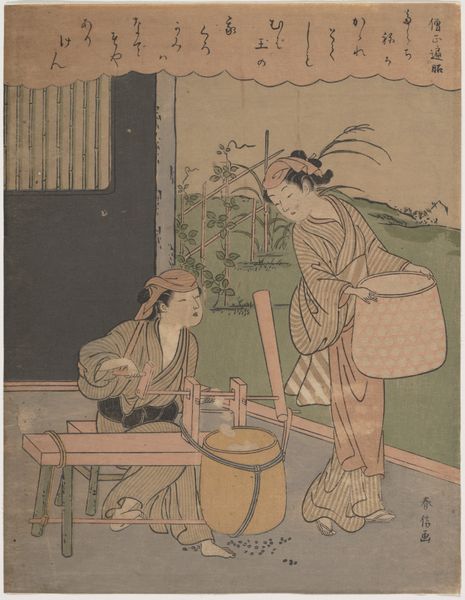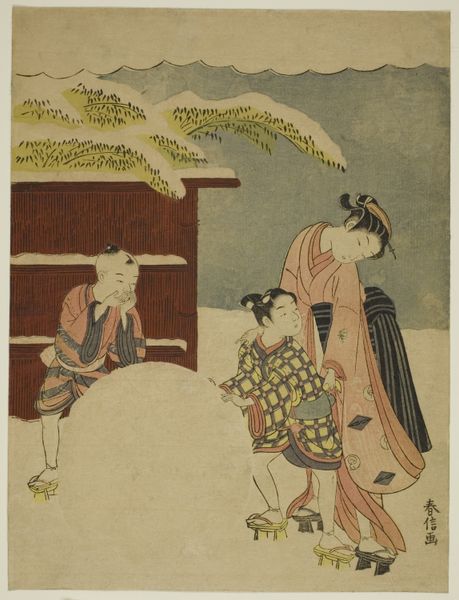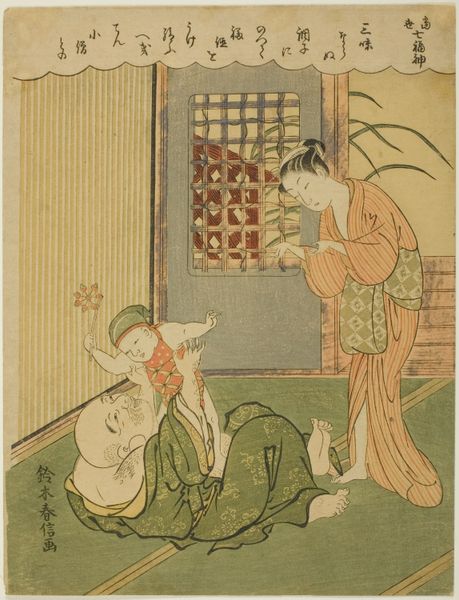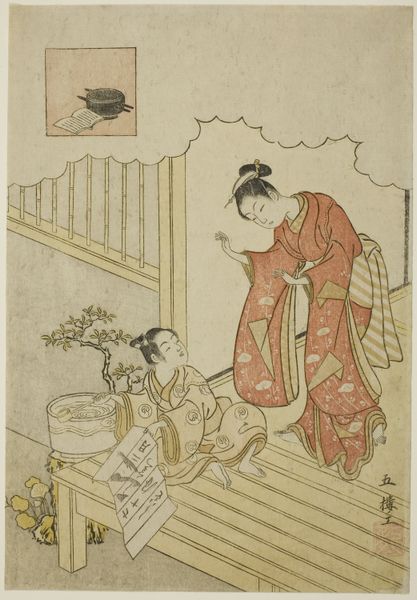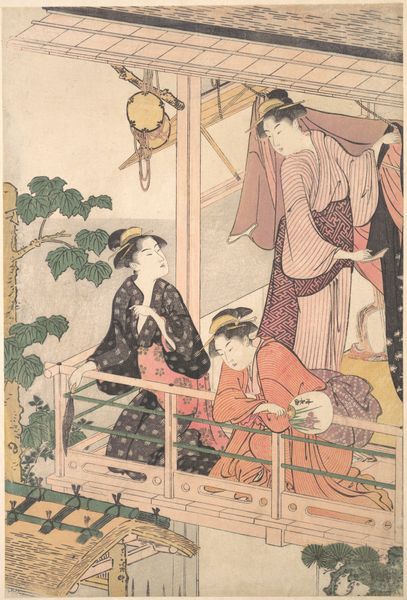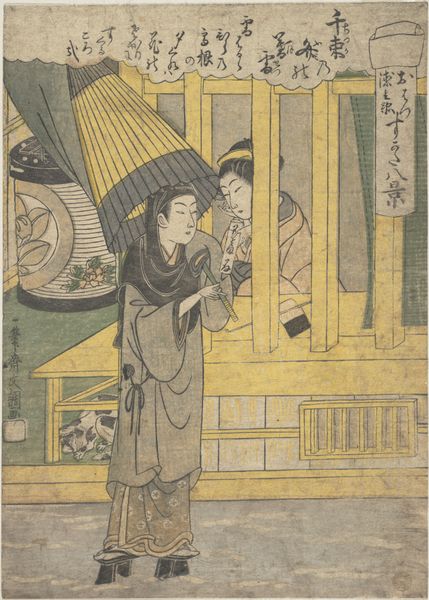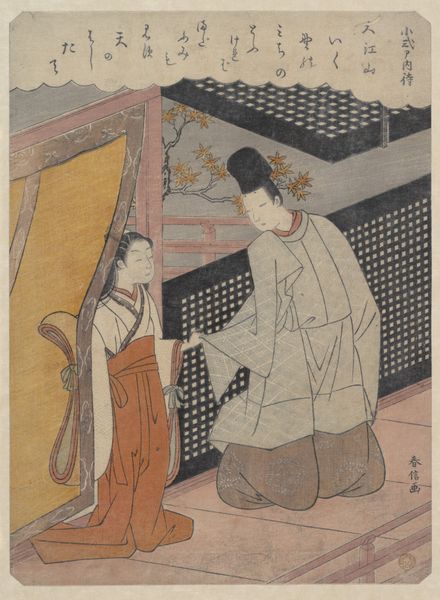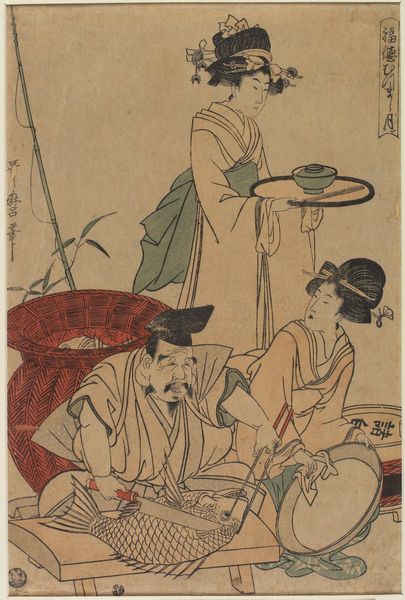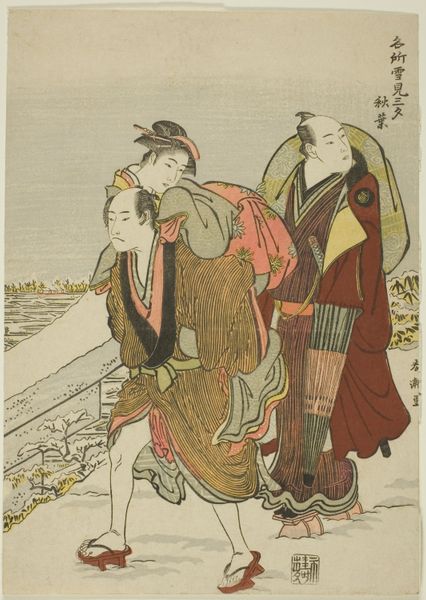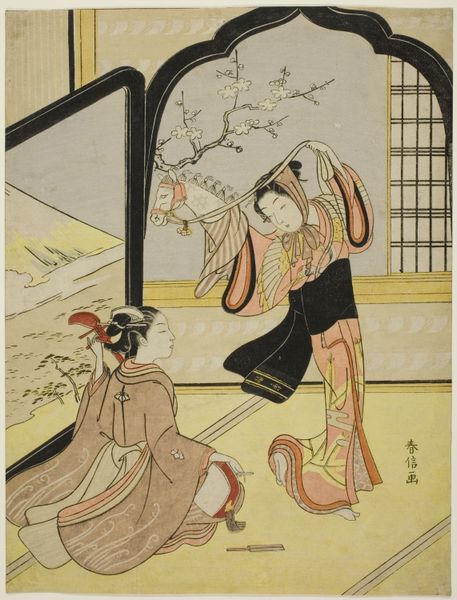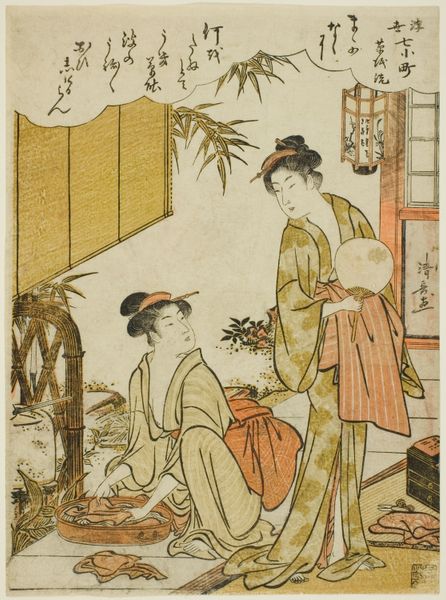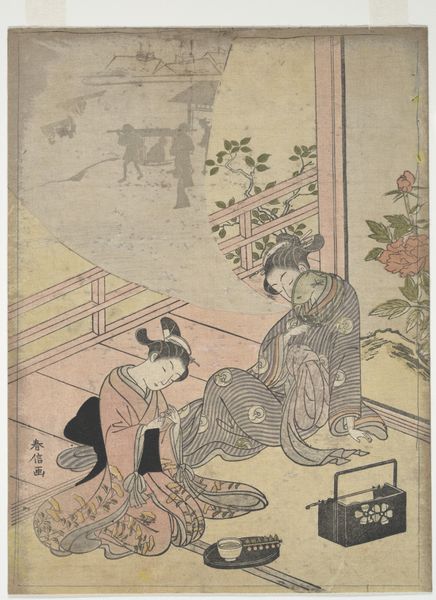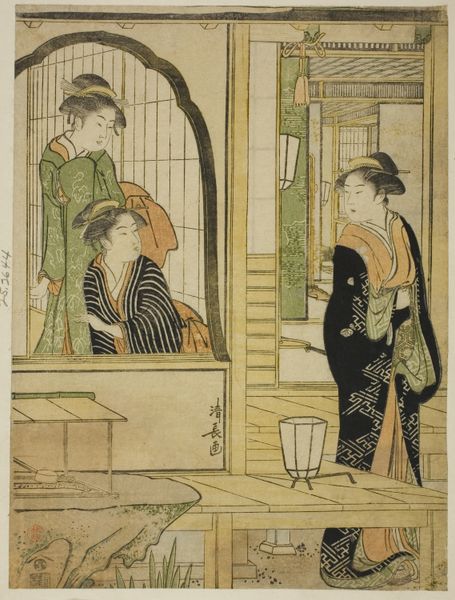
Poem by Henjo Sojo, from an untitled series of Thirty-Six Immortal Poets c. 1767 - 1768
0:00
0:00
print, woodblock-print
# print
#
asian-art
#
ukiyo-e
#
figuration
#
woodblock-print
#
genre-painting
Dimensions: 27.6 × 20.5 cm (10 7/8 × 8 1/16 in.)
Copyright: Public Domain
Editor: Here we have Suzuki Harunobu's woodblock print, "Poem by Henjo Sojo, from an untitled series of Thirty-Six Immortal Poets," made around 1767-1768. There’s something so delicate and subtle about it. The flat planes of color create a real sense of depth and texture despite their simplicity. How do you interpret this work? Curator: Looking at the woodblock print method itself is key. It wasn't just about aesthetics; it was a whole production. How many artisans would have been involved in each print’s production, from carving the blocks to layering colors? And what does this say about art production and accessibility at the time? Editor: That's a good point. I was so focused on the subject, I wasn't considering the physical creation of it. What's the significance of it being a woodblock print, other than just a method of creation? Curator: Exactly! Consider the economics. Woodblock printing allowed for multiples, making art more widely available than, say, a unique painting for the elite. Who could now access imagery and information? What impact did this have on social classes, consumerism, even the distribution of ideas? The very *material* of this work changed how art functioned in society. Editor: So you are saying that the value lies less in the poetic scene and more in the democratization of art afforded by woodblock printing? Curator: Not *less* value, but value in different spaces! Both the image and its means of production speak to different, equally crucial, points of understanding 18th-century Japan. Editor: I never considered that. Looking at it that way makes me appreciate how deeply materials and the methods shape not only the art but the culture surrounding it. Thanks! Curator: Precisely. And thinking critically about production reframes our entire understanding of "art" itself.
Comments
No comments
Be the first to comment and join the conversation on the ultimate creative platform.
